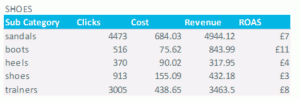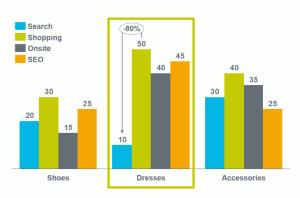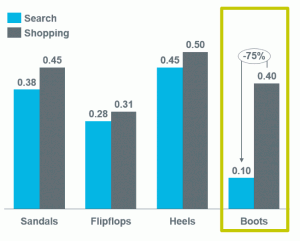Hidden Potential In Your Paid Search And Shopping Campaigns
How to find anomalies in your paid search campaigns and address them for improved performance.
In search marketing, we’re always trying to get that little bit of extra performance out of our paid campaigns.
To uncover the hidden potential in your campaigns, you need to identify and assess anomalies — those areas which perform well in general, but not in your paid search campaigns.

Find anomalies using search query analysis:
In order to find anomalies, you have to have a benchmark for how well you expect your search campaigns to perform. Since search (text ad) performance is driven by keywords, while shopping (product listing ad) is driven by products, and your overall e-commerce performance is driven by a multitude of marketing activities and ad formats, you need a common denominator to compare performance and gain actionable nsights.
Get data:
Each of areas you want to compare. For search and shopping, use:
1.The search query reports in AdWords;
2.The organic queries you (partly) get through Google Analytics;
3.On-site keyword performance that is available through your preferred web analytics system.
Preparing the data:
In order to get actionable insights out of your data, you’ll have to aggregate performance by something we call “semantic attributes.” Semantic attributes could be product category (e.g., shoes, sandals), designer (e.g., Nike, Adidas) gender (men, women, boys, girls), material (e.g., leather) or anything else that regularly occurs in keywords and is relevant to your business.The outcome of this step will look like this:

While doing this for some categories (such as “dresses”) is quite easy, filtering out all relevant subcategories for “shoes” is more complicated and can be time-consuming if you are not using a tool to support this analysis.
Visualizing your data in a chart will also give you a nice visual representation of where the anomalies are hiding.

Finding and fixing the problem:
Once you have identified where the anomalies are, finding the problem and fixing it is quick and easy.
There are only a few common reasons why you might see such a huge difference in performance between your shopping and text ads.
Important keywords are missing:
If you notice that a particular Semantic Attribute of your products (designer, category, color, gender and so on) performs well in Google Shopping, but not in Search, it’s usually because you’re missing a few important keywords.
Bids are too low:
To figure out whether too-low bids are responsible for the weak search performance, compare your costs per click between the search and shopping campaign for that semantic attribute.

Finding and fixing the problem:
Once you have identified where the anomalies are, finding the problem and fixing it is quick and easy.
There are only a few common reasons why you might see such a huge difference in performance between your shopping and text ads.
Important keywords are missing:
If you notice that a particular Semantic Attribute of your products (designer, category, color, gender and so on) performs well in Google Shopping, but not in Search, it’s usually because you’re missing a few important keywords.
Bids are too low:
To figure out whether too-low bids are responsible for the weak search performance, compare your costs per click between the search and shopping campaign for that semantic attribute.
